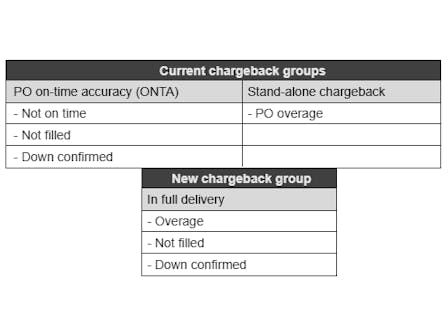Amazon Consolidates Key Chargeback Categories Under New “In Full Delivery” Policy
In the last issue of the Berk's Chargeback Tips series, we outlined how Amazon chargebacks can quietly erode profitability and how proper auditing can unlock real savings. This month, Amazon introduced a new policy that reinforces that point and raises the stakes.
As of July 21, 2025, Amazon has rolled out a new chargeback structure called “In Full Delivery”. This change consolidates multiple purchase order (PO) compliance requirements into a single chargeback category, making it easier for Amazon to issue penalties and harder for vendors to isolate root causes if they are not prepared.
Three Chargebacks, One Line Item
Previously, overages, unfulfilled PO confirmations, and late PO changes were treated as separate issues. With this update, they now fall under a unified policy. Amazon now considers the following three defects part of the In Full Delivery chargeback:
- Overage: invoicing more units than Amazon ordered
- Not Filled: invoicing fewer units than were confirmed in the PO
- Down Confirmed: reducing confirmed PO quantities after the five-day deadline post hand-off start
These are no longer distinct penalties. One issue can now pull other processes into scope. That has implications for supply chain coordination, invoice accuracy, and vendor operations, especially for high-volume accounts.

With the new In Full Delivery chargeback, Amazon is no longer treating PO issues in isolation. One small misstep in confirmation, shipping, or invoicing can now trigger a bundled penalty.
Implementation Timeline
Amazon began flagging non-compliant POs as early as June 9, but only as warnings. The policy officially went into effect on July 21, at which point invoicing began.
Brands now have no buffer. Any discrepancies related to the above criteria will trigger a chargeback. The operational margin for error has narrowed.
Early Signs from the Field
Our chargeback expert Berk has already integrated this update into client reporting. The “In Full Delivery” chargebacks are now visible in both weekly and monthly audit cycles.
The goal is to identify disputes before they are invoiced and escalate recurring discrepancies before they become embedded costs.

The Takeaway
More than a policy update, this is a structural change in how Amazon monitors compliance. Errors that used to trigger isolated fees are now bundled, increasing financial exposure, especially for vendors shipping large volumes with narrow margins.
For vendors already struggling with shortages, ASN (advanced shipment notifications) accuracy, or late PO updates, this change will show up on their invoices quickly. And once it does, disputing without proper documentation becomes more difficult.
If you are unsure whether this change is impacting your P&L, you are already at risk. Let’s look at your recent chargeback activity before these costs add up.

